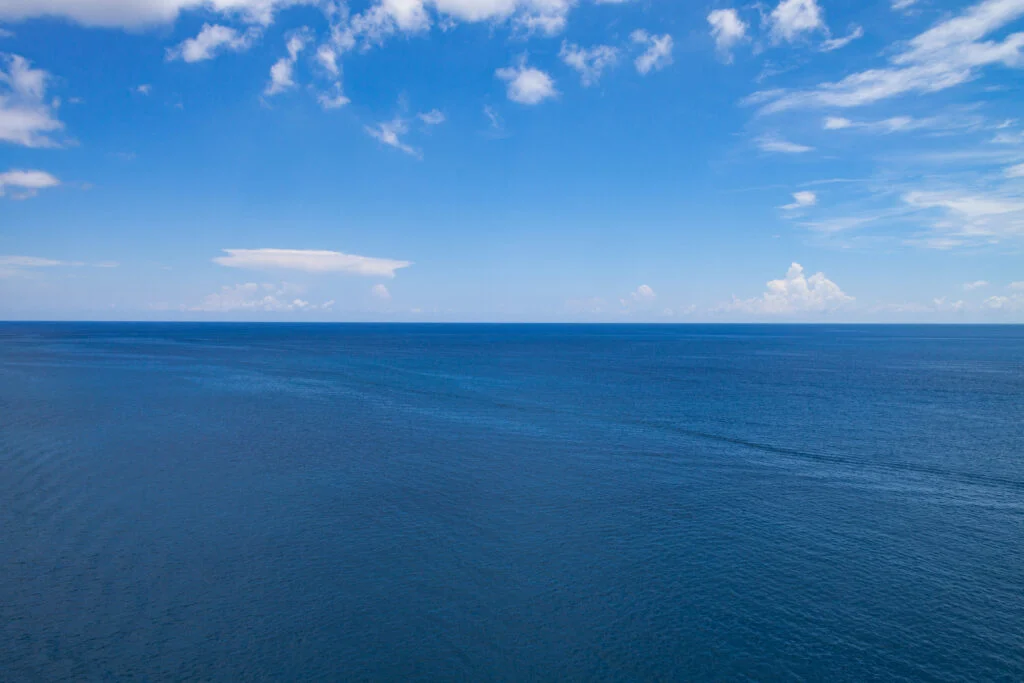The Top 5 Largest Oceans in the World
Oceans cover about 71% of our planet’s surface, shaping climates, fostering biodiversity, and serving as the cradle of life on Earth. While all oceans are interconnected as one “global ocean,” they are divided into five major bodies, each with unique characteristics and ecological significance. Here’s a deep dive into the top five largest oceans in the world.
1. Pacific Ocean
Size: ~168.72 million square kilometers

The Pacific Ocean is not only the largest but also the deepest ocean on Earth, containing over 50% of the world’s ocean water. It stretches from the Arctic in the north to Antarctica in the south, bordered by Asia and Australia on one side and the Americas on the other. Known for the “Ring of Fire,” the Pacific is dotted with volcanic islands and trenches like the Mariana Trench, the deepest point on Earth. Its vastness supports rich ecosystems, from coral reefs to deep-sea hydrothermal vents.
2. Atlantic Ocean
Size: ~85.13 million square kilometers

The Atlantic Ocean is the second-largest and plays a crucial role in global trade and navigation, with its shores touching North America, South America, Europe, and Africa. It is home to the Mid-Atlantic Ridge, the longest mountain range in the world. The Gulf Stream, a major Atlantic current, significantly influences the climates of North America and Europe. Historically, the Atlantic has been central to exploration, colonization, and the development of civilizations.
3. Indian Ocean
Size: ~70.56 million square kilometers

The Indian Ocean, bounded by Africa, Asia, Australia, and the Indian subcontinent, is renowned for its warm waters and unique monsoon wind patterns. It supports an array of marine life, including the endangered dugong and unique coral species. The Indian Ocean has been a historical hub for trade routes connecting the East to the West, fostering cultural exchanges over centuries.
4. Southern Ocean
Size: ~21.96 million square kilometers

Encircling Antarctica, the Southern Ocean is the newest to be officially recognized (in 2000) and is known for its powerful currents, such as the Antarctic Circumpolar Current. Its cold waters are rich in nutrients, making it one of the most biologically productive regions in the world, supporting species like krill, which form the foundation of the Antarctic food web. It also plays a vital role in regulating global temperatures by absorbing carbon dioxide and heat.
5. Arctic Ocean
Size: ~15.56 million square kilometers

The smallest and shallowest of the oceans, the Arctic Ocean is unique for its sea ice, which expands and contracts with the seasons. It lies within the Arctic Circle, bordered by North America, Europe, and Asia. Despite its extreme conditions, the Arctic Ocean is home to remarkable species such as polar bears, seals, and narwhals. It is also a critical indicator of climate change, with its ice cover rapidly diminishing in recent years.
The oceans are the lifeblood of Earth, covering vast expanses and sustaining countless ecosystems. From the immense Pacific to the icy Arctic, each ocean has unique features and global importance. Understanding these aquatic giants not only highlights their beauty but also stresses the need for their conservation amidst environmental challenges. By protecting our oceans, we safeguard a vital component of Earth’s delicate balance and ensure a sustainable future for all life on this planet.
For more top 5:
